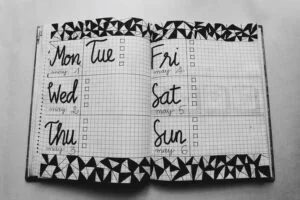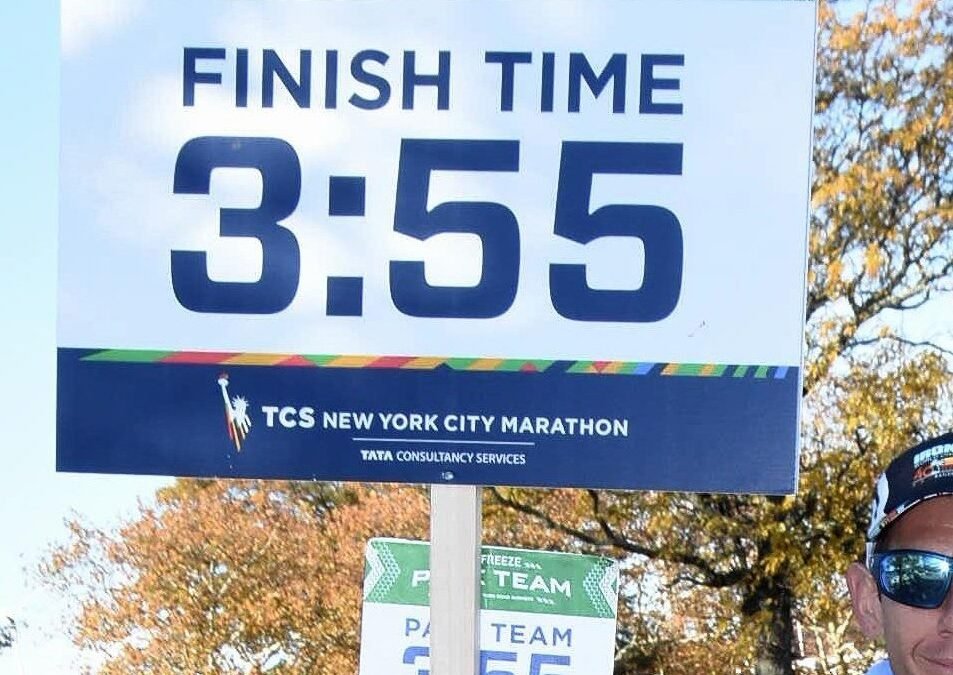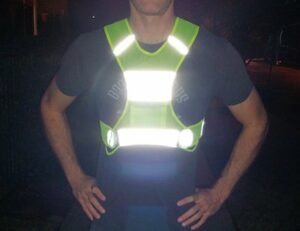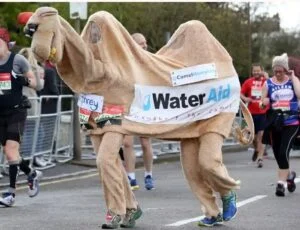
Running Resolutions for 2023
By Coach Adolfo Salgueiro
Happy New Year!!! May 2023 bring you countless, injury-free miles and PRs in all your distances.
As we turn the page onto a brand-new notebook, one where all the pages are still to be written, we set up our running hopes and goals for this new trip around de sun and we must start dialing in and focusing on what we want to accomplish when it comes to our physical activity. This way we can have a roadmap and not improvise along the way. So, come December, we are not regretting a lost opportunity to accomplish something big.

A brand new year to fill in with hopes and goals so, come December, we don’t realize we have wasted 12 good months (Photo: Bich Tran, Pexels)
As we analyze our goals for 2023 and we ponder our fears about coming short, we start by making sure we are well prepared and focused by setting goals that require effort and challenge you to be active for 12 months. Below find six guidelines to set up realistic running goals.
1 – Set up a bold yet attainable goal: Easy goals that can be achieved with little effort don’t mean much. Unfeasible goals that will not be realized, will leave you in frustration. So, be reasonable. Goals can be accumulative, like running 1000 miles in the year, or 200 kilometers per month, or five times a week. You can also strive towards running a particular distance or have a goal time for a distance. The key is to make it a real challenge, one that will leave you elated when you achieve it.
2 – Choose your goal race or races for the year, now: Set up a road map so you know how to get from where you are to where you want to go. Select the races where you want to excel and/or set up your PRs and then work toward is with plenty of time. If you want to set up a marathon PR, you must set up enough time aside so to include all the elements of a training plan. If your goal is a 5K or 10K PR, then you need to plan enough speed work, which also requires time. Make sure you are not surprised when your goal race is 4 weeks away and you are not ready.
3 – Set up a reasonable training schedule that will fit your life: Once you have figured out what you want to accomplish for the year, it is time to get it all into your schedule. Don’t wait until you have time to fit in your training. If you do, you will never train. Write in your running and your cross-training activities into your schedule (actually, write it in, yes!) so, when something comes up, you’ll know you are not available, since there’s a previous appointment in your agenda. This simple technique has worked very well for me, so I highly recommend it.

Block off your exercise time in your daily planner, so you won’t double book it (Photo: Bich Tran, Pexels)
4 – Don’t just run: Sure, running is what we want to do. Yet, the constant percussion this sport places on our bodies requires us scheduling time for repair and restoration. Incorporating one or two days a week of yoga, swimming, Pilates, elliptical or any other non-impact exercise will go a long way to make you a more resilient runner. And if you don’t have time to ad that to your schedule, then trade in a run for one of them. In the long run, your body will thank you and your racing times will reflect the benefits.
5 – Include strength training: I procrastinated about this one the entire 2022. Weight work specifically designed for runners and core exercises to help your body withstand the pounding of the long miles are no longer optional. If we don’t prepare our bodies and make them stronger, it is a matter of time before we will have to stop and recover from an injury. My #1 goal for this year is to restart my strength training.
6 – Upgrade your sleeping habits: If you put all the recovery tools together; the massage guns, the protein shakes, the compression gear, the amino acids and the write-in-your-favorite-here, the sum of them won’t be as restorative to your body as a good, full night of sleep. Skipping sleep is not a badge of honor, it is a mistake that will not allow your body to recover and with luck, you will end up underperforming. Without luck, you will end up injured.
If you liked this blog post, please give it a like, below; or leave a comment if you want to contribute to the discussion.















